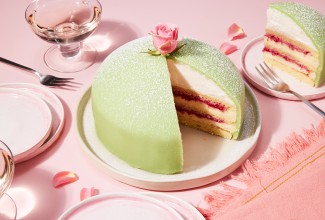Diplomat cream is pastry cream’s lighter, fluffier sibling
Here’s why pastry chefs love this lofty, luscious filling.
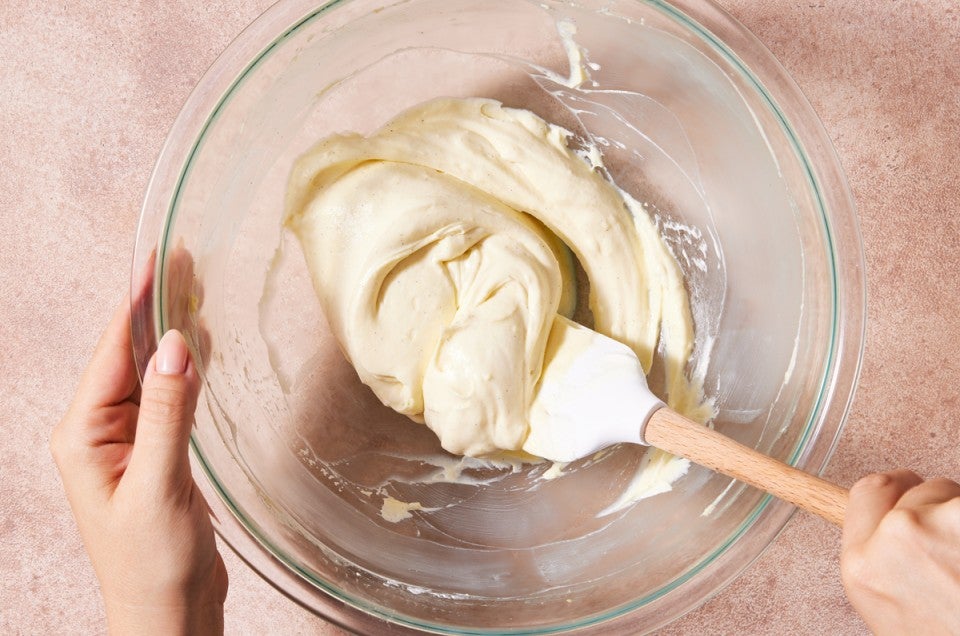

What has the lightness of whipped cream, the rich flavor of pastry cream, and the stability of buttercream? Meet diplomat cream, your new favorite cake filling.
A flavorful, creamy cake filling that’s easy to stack between layers and strikes a balance between rich and light is a baker’s dream, but it can be difficult to achieve. Pastry cream delivers in flavor — sweet and custard-like — but lacks lightness. Whipped cream is as light as it comes but doesn’t have much flavor or stability. Buttercream, meanwhile, is sturdy and stable but so rich that it can mask the flavors of your dessert, as the butter and sugar steal the show. But diplomat cream combines some of the best qualities of all three for a sturdy, stackable, and flavorful filling. No wonder it’s beloved by pastry chefs far and wide.
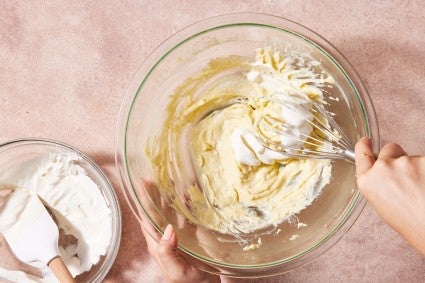
Diplomat cream is simply pastry cream lightened with whipped cream — often with the addition of gelatin for stability — to make it airier. It starts with the pastry cream, or crème pâtissière, a custard thickened with eggs and starch that is the classic filling for éclairs and the unctuous star of many fruit tarts. Whipped cream is folded in to create a luscious filling that preserves the flavor of pastry cream with a lighter, fluffier texture that won’t collapse when used as a filling or topping.
Diplomat cream doesn’t, by definition, have to include gelatin, but it’s commonly added to the pastry cream for even more stability, especially when used as a cake filling. (Gelatin will allow the whipped cream-lightened filling to better hold its shape and structure.)
One of the best-known uses of diplomat cream is in Princess Cake (Prinsesstårta). This traditional Swedish domed cake combines layers of vanilla cake with jam and a diplomat cream filling, all topped off with a cap of whipped cream and a smooth cloak of marzipan, often tinted pistachio green. You can search the country for the best princess cake, and you’ll probably get directed (again and again and again) to an unusual spot: a pizza joint in Los Angeles called Quarter Sheets Pizza. Here, wedged between a gas station and a bar just off Sunset Boulevard, pastry chef Hannah Ziskin is turning out some of the city’s finest desserts, including her signature princess cake.
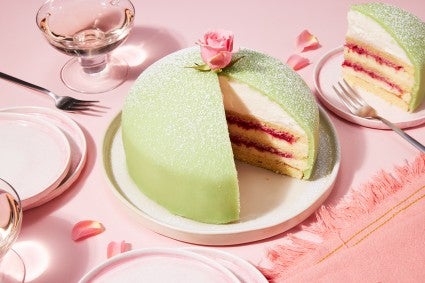
Her version at Quarter Sheets is similar to the classic in flavor profile, but Hannah has subtly tweaked the recipe to suit her palette. She makes it with olive oil chiffon cake, salty vanilla-infused milk soak, and tart, homemade raspberry jam. Instead of the classic whipped cream topping, she mixes heavy cream and mascarpone for a supple thickness.
The secret star of the cake, though, is the diplomat cream spread between the layers. “I prefer diplomat cream to buttercream because you can get richer flavor profiles from it,” she explains. “And it’s lighter and less sweet.” She adds, “We stabilize the mixture with a little bit of gelatin because we use the diplomat cream in many of our layer cakes, and the added structure helps while stacking and slicing.” The filling isn’t just for cake, either. Hannah uses it in many pastry applications, from layer cakes to cream puffs, banana cream pie to trifles, and even on its own as a pudding.
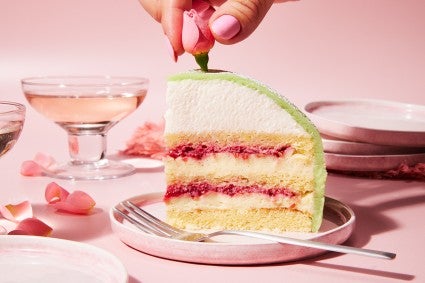
When making diplomat cream yourself, start with a well-written, well-tested recipe for the best success. Once you’ve mastered the technique, you can start to play around with the ratios. “I use different amounts of whipped cream depending on what result I’m after,” says Hannah. “For cakes, I use about 20% whipped cream and 80% pastry cream by weight, but if I’m filling a cream puff and want an airier texture, I use closer to 40% whipped cream.” Consider the texture you’re looking for when figuring out your ideal ratio of pastry cream to whipped cream: The more whipped cream, the lighter and fluffier the diplomat cream will be.
One additional benefit of diplomat cream is that the pastry cream base can be flavored in myriad ways, like peanut butter, hazelnut, orange, caramel, and more. (Find more flavor ideas here.)
Diplomat cream is luscious enough that you may find yourself standing in the kitchen eating it straight from the bowl with a spoon, but if you can resist enough to save some for baking, use it to fill profiteroles, eclairs, doughnuts, and of course, Hannah’s Princess Cake (Prinsesstårta).
Cover photo by Rick Holbrook; food styling by Kaitlin Wayne.
